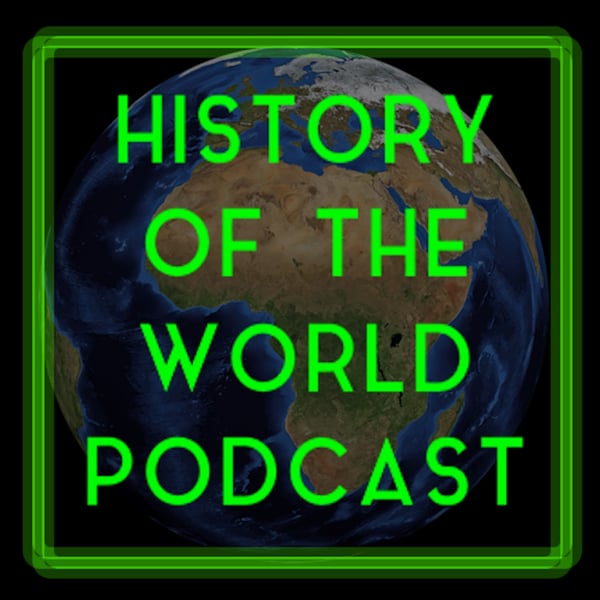Vol 4 Ep 53 - BATTLE - The Battle of Kutná Hora ( 1421 )
History of the World podcast
Chris Hasler
4.8 • 971 Ratings
🗓️ 10 April 2023
⏱️ 45 minutes
🧾️ Download transcript
Summary
1421 - The execution of Jan Hus caused rebellion in the Kingdom of Bohemia, when early Protestants against the Catholic Church rallied to send a message to the Holy Roman Empire and the Pope. This battle is a part of the wider Hussite Wars.
--- Send in a voice message: https://podcasters.spotify.com/pod/show/historyoftheworldpodcast/messageTranscript
Click on a timestamp to play from that location
| 0:00.0 | The History of the World Podcast, written and presented by Chris Hasler |
| 0:20.8 | Volume 4, The Medieval World. |
| 0:25.0 | Episode 53, the Battle of Kudna Hoora. Oh, The settlement called Kunahora is in the modern country of the Czech Republic just short of 50 miles east of the modern Czech capital city of Prague. The Czech Republic represents the westernmost expansion |
| 1:06.7 | of Slavic peoples during the early Middle Ages. This area of Europe gives us a very fine example of cultural evolution through the ages, |
| 1:17.0 | with skeletal remains of both Neanderthal and modern Homo sapiens demonstrating an inter-species existence. |
| 1:25.0 | Much in the same way of early human art, including figurines, have been excavated in Czech lands. A progression of cultures from stone age to bronze age to iron age |
| 1:38.1 | can be mapped through artifacts discovered in this area. |
| 1:42.1 | Iron age excavations relate closely to the Celtic cultures of Central Europe. |
| 1:48.0 | During the classical age this area was subject to migrations from Germanic tribes |
| 1:54.4 | looking to push the Celtic tribes out of the area. This area may have been the |
| 2:00.4 | most northern extent of the Roman Empire and an area where tensions |
| 2:05.3 | between the Romans and Germanic tribes such as the Markamani would have been high. |
| 2:09.7 | The lands of the modern Czech Republic have often represented borderlands or cultural frontiers, |
| 2:17.0 | and this may be due to how continental East Central they are. |
| 2:21.0 | When the Huns migrated into Europe from the erosion step, from the end of the fourth century, |
| 2:27.2 | these lands would have represented their westernmost expansion. The Huns did not occupy these lands for many generations and the Germanic tribes moved back into |
| 2:38.0 | the area after the decline of the Huns. During the 6th century the Franks would expand from the west into these lands. |
| 2:46.2 | The Franks were a powerful Germanic tribe in their own right. |
| 2:51.2 | The next major westward expansion from the Eurasian. their own right. |
| 2:52.6 | The next major westward expansion from the Eurasian step was from the Avars who may have |
| 2:57.4 | been a Turkic peoples. |
| 3:00.2 | Their westward expansion would have pushed Slavic tribes of Eastern Europe into the borderlands of the Franks. |
... |
Please login to see the full transcript.
Disclaimer: The podcast and artwork embedded on this page are from Chris Hasler, and are the property of its owner and not affiliated with or endorsed by Tapesearch.
Generated transcripts are the property of Chris Hasler and are distributed freely under the Fair Use doctrine. Transcripts generated by Tapesearch are not guaranteed to be accurate.
Copyright © Tapesearch 2025.

